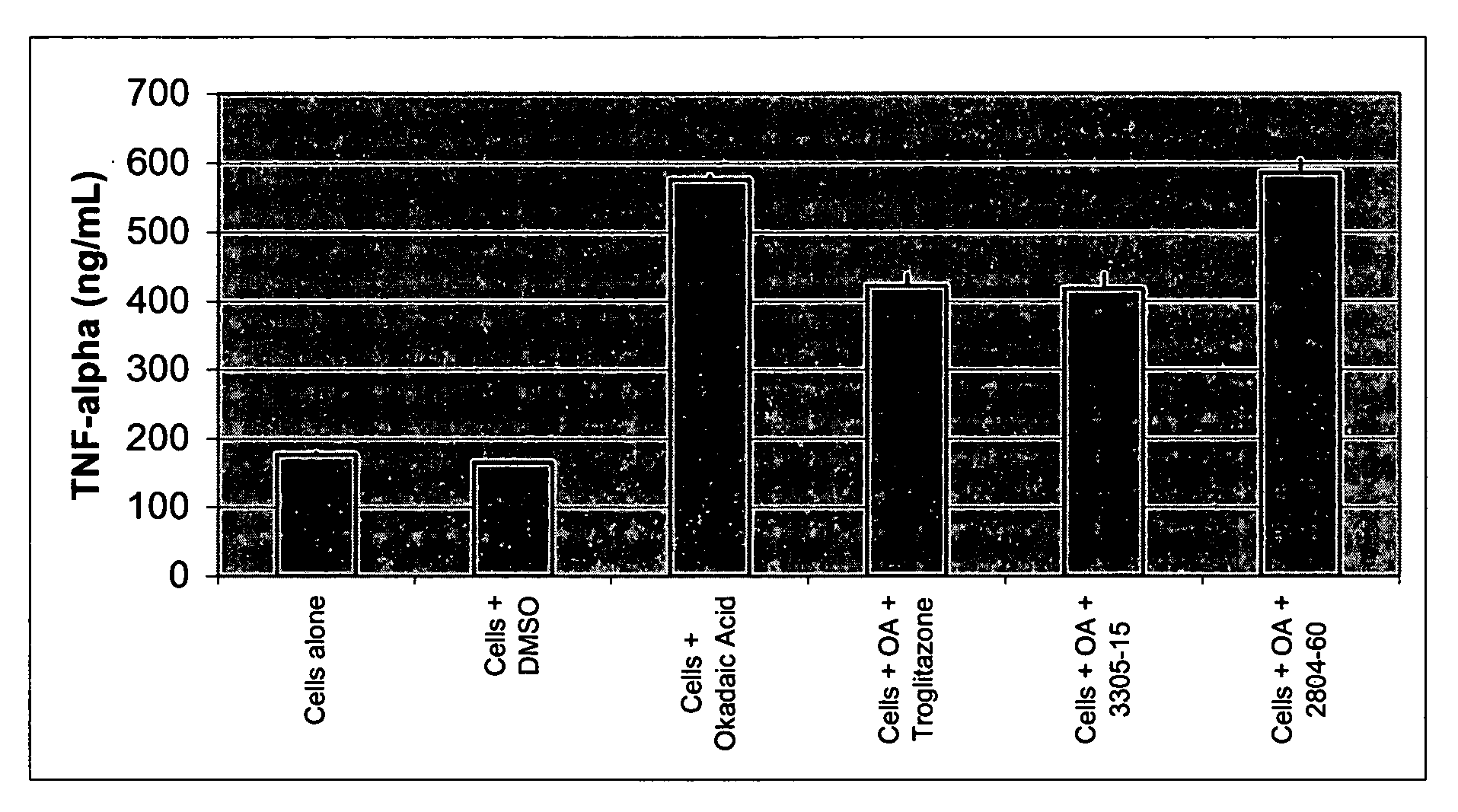Use of biocompatible amphiphilic polymers as an anti-inflammatory agent
a technology of biocompatible amphiphilic polymers and polymers, which is applied in the direction of prosthesis, drug compositions, metabolic disorders, etc., can solve problems such as inflammatory response to occur, and achieve the effects of reducing or preventing systemic or local inflammation, preventing or inhibiting inflammatory responses, and reducing or preventing swelling
- Summary
- Abstract
- Description
- Claims
- Application Information
AI Technical Summary
Benefits of technology
Problems solved by technology
Method used
Image
Examples
example 1
MGSA Polymer Inhibited Cytokine Release from Monocytes
[0064]Human monocytes were isolated from freshly collected buffy coat preparations of whole human blood. Briefly, whole blood was diluted 1:1.33 with sterile phosphate buffered solution (PBS) and layered over Histopaque, which was then centrifuged for 30 minutes at 1500 rpm at room temperature. The interface was harvested and washed with PBS, followed by another centrifugation at 1500 rpm for 10 minutes. A final wash was performed in RPMI 1640 with 10% fetal bovine serum (FBS). Cells were counted using a hemacytometer and seeded at 2.4×106 cells / 300 μl into a 48-well tissue culture treated plate. Cells were incubated for 1 hour at 37° C., 5% CO2 and non-adherent cells were removed with a PBS wash. 300 μl of RPMI 1640 with 10% FBS was added back to the cells along with the various test conditions; cells in media alone, with DMSO (the vehicle used to reconstitue okadaic acid and troglitazone), with okadaic acid (OA, 50 nM), with OA...
example 2
Use of MGSA Polymer to Promote Adipogenesis
[0066]PPARγ plays a major role in adipogenesis. In order to determine whether MGSA polymer could act as a PPARγ agonist, it was evalutated in an adipogenicity assay.
[0067]3T3-L1 cells (ATCC, CL-173) were grown to confluency in culture medium consisting of Dulbecco's Modified Eagle's Medium (DMEM) supplemented with 10% fetal bovine serum, 100 units / ml penicillin, and 100 μg / ml streptomycin. Two days post confluency (day 0), 1.7 μM insulin, 0.5 μM dexamethasone, and 0.5 mM isobutylmethylxanthine (collectively designated IDX) were added to the culture medium (differentiation medium). Following two days of culture at 37° C., 5% CO2, the medium was changed to culture medium supplemented with 1.7 μM insulin alone (maintenance medium). On day 7, the cells were fixed with 10% formalin and stained for lipid accumulation using Oil Red O. The control group was differentiated using the protocol described above. The test groups followed the same protoco...
PUM
| Property | Measurement | Unit |
|---|---|---|
| Amphiphilic | aaaaa | aaaaa |
| Bioactive | aaaaa | aaaaa |
Abstract
Description
Claims
Application Information
 Login to View More
Login to View More - R&D
- Intellectual Property
- Life Sciences
- Materials
- Tech Scout
- Unparalleled Data Quality
- Higher Quality Content
- 60% Fewer Hallucinations
Browse by: Latest US Patents, China's latest patents, Technical Efficacy Thesaurus, Application Domain, Technology Topic, Popular Technical Reports.
© 2025 PatSnap. All rights reserved.Legal|Privacy policy|Modern Slavery Act Transparency Statement|Sitemap|About US| Contact US: help@patsnap.com


